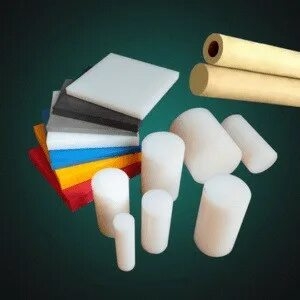Engineering Plastics Market Analysis Detailed Growth with Regional Expand by 2030
Posted by Pearl Smith on May 25th, 2023
The engineering plastics market is a segment of the overall plastics industry that focuses on the production and utilization of high-performance plastics with enhanced mechanical, thermal, chemical, and electrical properties. Engineering plastics are designed to withstand demanding applications and provide superior performance compared to traditional plastics.
Here is a comprehensive overview of the engineering plastics market:
Types of Engineering Plastics:
Polyamide (PA, Nylon)
Polycarbonate (PC)
Polyoxymethylene (POM, Acetal)
Polybutylene Terephthalate (PBT)
Polyethylene Terephthalate (PET)
Polyphenylene Sulfide (PPS)
Polyether Ether Ketone (PEEK)
Polyimide (PI)
Polysulfone (PSU)
Polyetherimide (PEI)
Properties and Applications:
•Polyamide (PA): Excellent strength, toughness, and chemical resistance. Used in automotive, electrical, and consumer goods industries.
• Polycarbonate (PC): High impact resistance, transparency, and heat resistance. Applications include automotive components, electronic devices, and construction.
• Polyoxymethylene (POM): Low friction, high stiffness, and dimensional stability. Used in gears, bearings, and electrical connectors.
• Polybutylene Terephthalate (PBT): Good electrical insulation and resistance to chemicals. Commonly found in automotive parts, electrical connectors, and appliances.
• Polyethylene Terephthalate (PET): High strength, chemical resistance, and clarity. Used in beverage bottles, food packaging, and textiles.
• Polyphenylene Sulfide (PPS): Excellent thermal and chemical resistance. Applications include electrical components, automotive parts, and filters.
• Polyether Ether Ketone (PEEK): Exceptional mechanical and thermal properties. Used in aerospace, medical, and electrical industries.
• Polyimide (PI): Excellent heat resistance, electrical insulation, and chemical stability. Commonly used in electronics, aerospace, and automotive applications.
• Polysulfone (PSU): High temperature resistance, transparency, and chemical resistance. Used in medical equipment, plumbing, and automotive parts.
• Polyetherimide (PEI): Good heat resistance, flame retardancy, and electrical properties. Applications include electrical connectors, aerospace components, and automotive parts.
Market Drivers:
Increasing demand from automotive, electrical and electronics, and aerospace industries for lightweight and high-performance materials.
Growing focus on sustainable and environmentally friendly plastics.
Advancements in technology leading to improved engineering plastic formulations.
Expansion of end-use industries in emerging economies.
Market Challenges:
High material costs compared to traditional plastics.
Limited recycling options for certain engineering plastics.
Stringent regulations on plastic waste management and disposal.
Market Trends:
Increasing research and development activities to develop new engineering plastic materials with enhanced properties.
Rising adoption of engineering plastics in 3D printing applications.
Growing demand for bio-based and biodegradable engineering plastics.
Shift towards lightweight materials to improve fuel efficiency in automotive and aerospace sectors.
Regional Analysis:
Asia-Pacific: Dominates the engineering plastics market due to rapid industrialization, urbanization, and manufacturing activities in countries like China, India, and Japan.
North America: Significant market share, driven by the automotive, aerospace, and electrical industries.
Europe: Strong presence of automotive and electrical manufacturers contributing to the market growth.
Rest of the World: Increasing demand for engineering plastics in developing regions like Latin America and the Middle East.
Key Players:
BASF SE
DowDuPont Inc.
Covestro AG
Solvay SA
Mitsubishi Engineering-Plastics Corporation
SABIC
Evonik Industries AG
Celanese Corporation
LANXESS AG
Arkema SA
The engineering plastics market is expected to continue growing as industries seek materials that offer superior performance, durability, and sustainability. Technological advancements and increasing investment in research and development activities will likely drive the development of innovative engineering plastic materials in the future.



